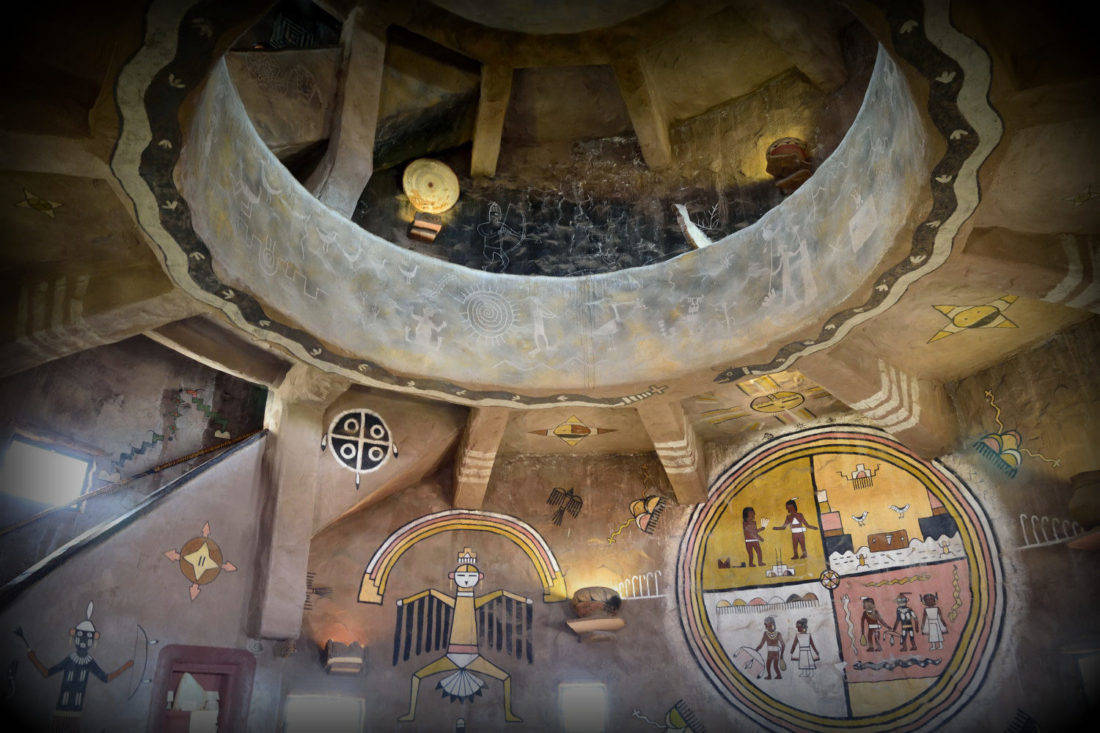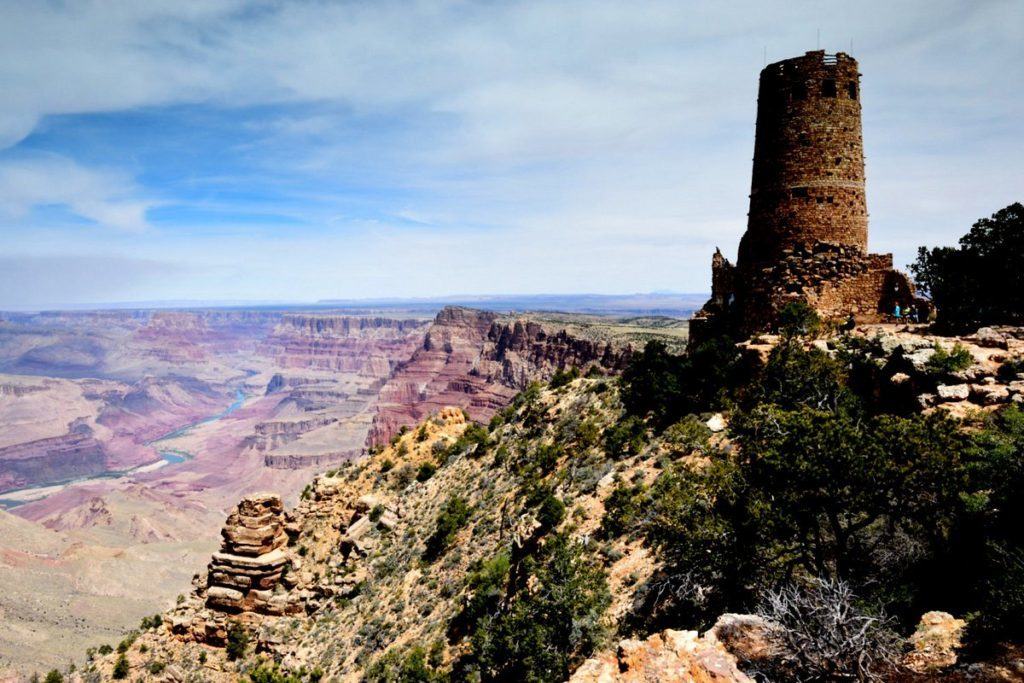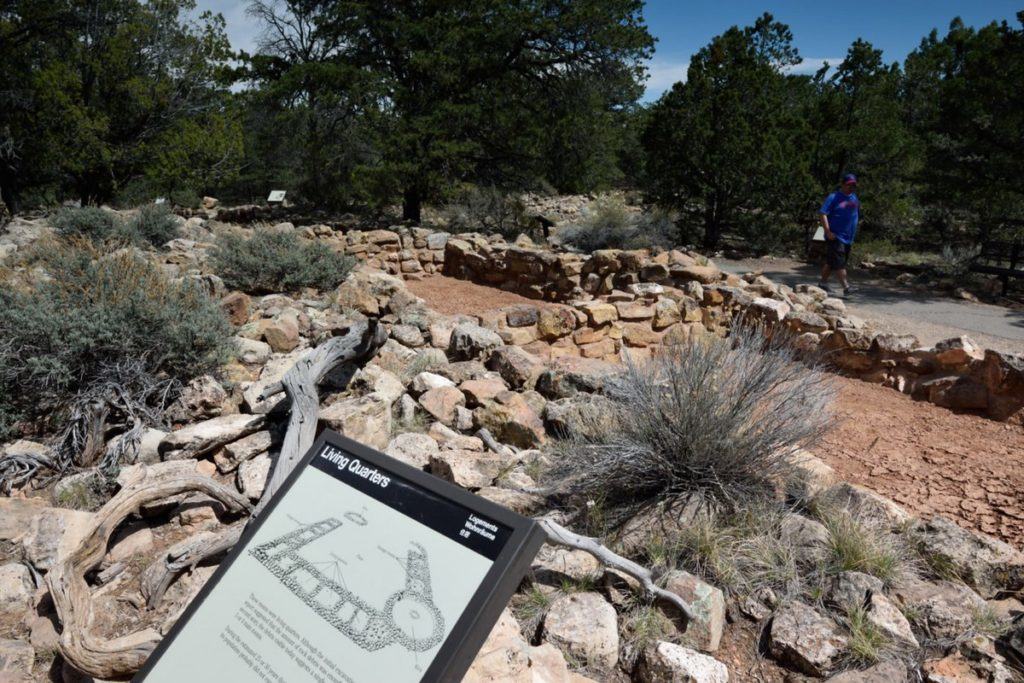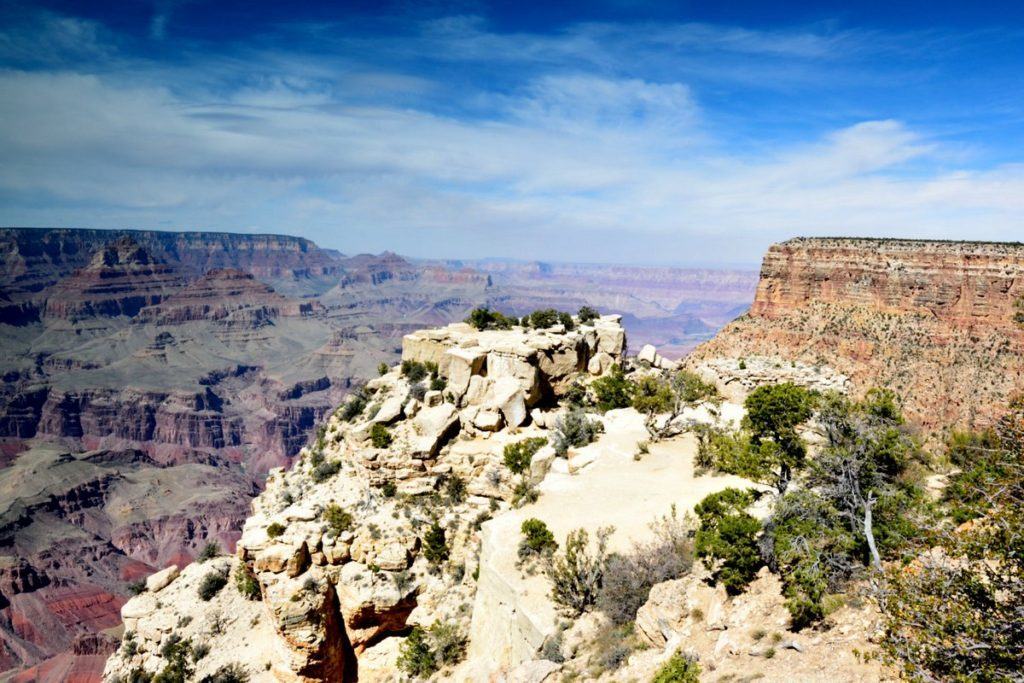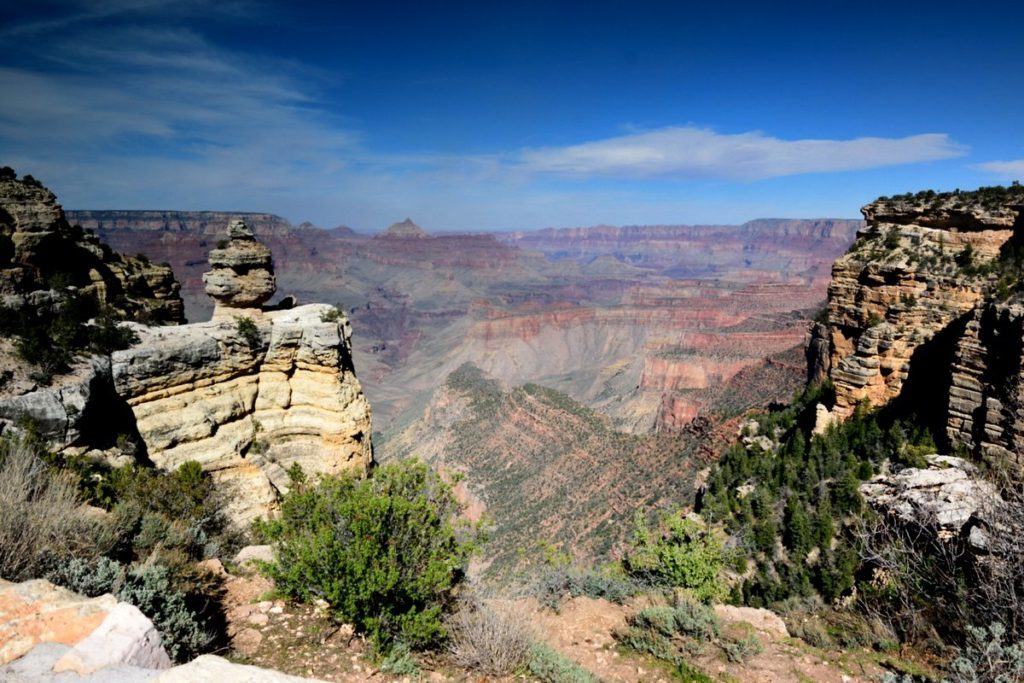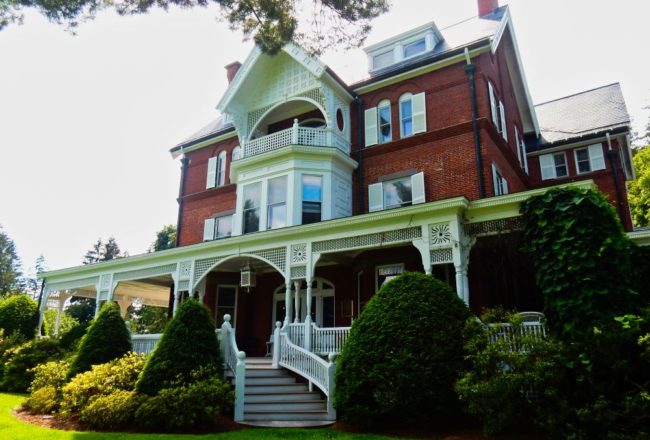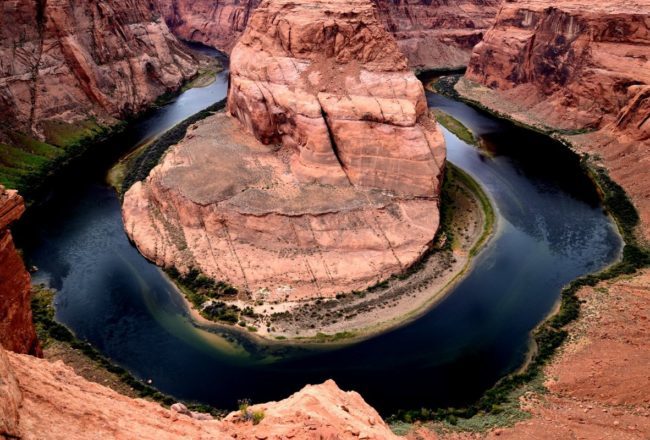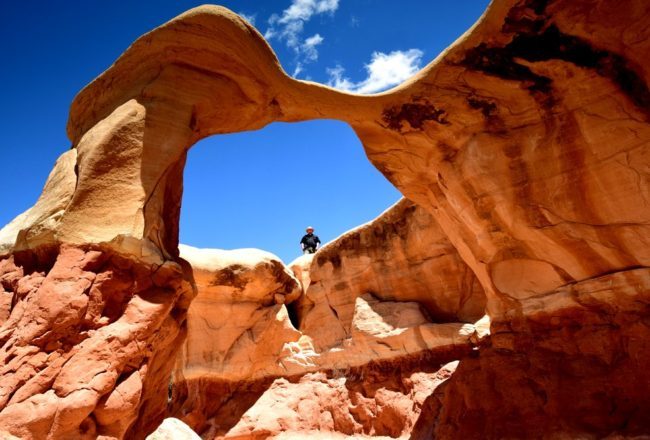Grand Canyon’s Desert View Point
Just south of Mather Point, we took Desert View Drive eastward for about 23 miles to reach Desert View Watchtower. Here we took an early picnic lunch and at the base of the tower looking down into the Grand Canyon. On that day, there was a cloudy overcast, and the Colorado River looked green and the colors of the canyon a palish pink.
After lunch, we took to exploring the Watchtower. On the first floor, were wide picture windows lined with benches and a few painter’s mirrors. These mirrors are dark-backed glass that allows the painter to view the canyon without any glare and provide a deeper contrast of the view. Beyond ground level, the stairs go up the 72-foot tower and lead to levels with painted walls depicting Hopi legends.
Finished with our tour of the tower and the surrounding area, we hopped back into the truck and drove back west. Since there are no hiking trails along this portion of the rim, driving was our best means of reaching the other viewpoints.
Navajo Point
Most folks skip Navajo Point since its only half a mile west of Desert View. All it really offers is an alternative view of the Colorado’s ‘big bend’ area and a distance shot of the watchtower. It does, however, offer the best colors for sunrise watchers and, at 7,498 feet, it is the highest spot anywhere on the south rim; if you don’t include the 5 story watchtower at Desert View.
Lipan Point
Lipan Point is a little less than 2 miles from Navajo Point and is located on a spur road. The road climbs 80 feet to the parking area where atop a small summit would be a 360° view of the canyon area if it wasn’t for all the darn pine woodland on the east side.
Tusayan Museum and Pueblo Ruins
We stopped at Tusayan Museum and Ruins for a change of pace. This 800-year-old Pueblo Indian site is located 2 miles west of Lipan Point on Desert View Drive. The small museum features exhibits and artifacts of the local Indian culture. Outside, we arrived just in time for a ranger-led tour of the well-preserved pueblo ruins built in 1185 CE. According to our ranger, it is believed that this particular pueblo may have housed a large extended family, with its single large community kiva and smaller private kiva. There were only four main housing rooms and a few smaller storage rooms. There is evidence that they gathered pinion pine nuts and grew some corn, squash and beans. The inhabitants didn’t live here that long and probably moved on to another location later in time.
Pinal, Papago and Zuni Points
In my research, I discovered three points not accessible directly from Desert View Drive. Regrettably, I also didn’t get to visit these points due to time constraints. But I’ll share my information here in hopes of going back later.
To get to Pinal Point (36.025812, -111.870162), you have to walk through the trail-less woods. Judging by the maps, you can park at Tusayan and walk directly north across the road to the Grand Canyon Rim. Another place to park is between mileposts 259 and 260. Head west and you’ll encounter Pinal. Continue walking westward and you’ll reach Papago Point (36.022985, -111.885354). You’ll know you’ve reached Papago Point because it ends with two semi-detached rocks which are gradually being eroded away from the main rim. It takes about an hour round trip to reach these two remote locations.
Zuni Point (36.015574, -111.912670) is another one of those points that offer solitary viewing of the Grand Canyon. You have to park between mileposts 257 and 258 along Desert View Road and then walk northwardly through the woods. Chances are you’ll reach the rim before you get to Zuni Point. Just follow the rim north, you would have reached your destination when you have a stunning view of Red Canyon below.
Moran Point
Directly on Desert View Drive and four miles from Tusayan Ruin is Moran Point. Moran is one of the most visited points but offers far reaching views of the Directly north is Cape Royal on the North Rim which is 8 miles as the crow flies, but is 215 miles by road.
Grand View Point
At the halfway point between Grand Canyon Village and Desert View Watchtower, is Grand View Point. This also happens to be the most southerly point on Grand Canyon South Rim. And of course, this is where you can see the most of Grandview Trail. Here you can watch hikers descend along the side of a narrow ridge towards Horseshoe Mesa.
Shoshone Point
Shoshone Point is one of my regrets. I really wanted to visit this particular viewpoint because it is a great picnic area and relatively easy to get to. The trailhead is only two miles southeast of Yaki Point and has a road leading to it. The road to Shoshone Point requires advance permission from the NPS. With its basic facilities, picnic tables and fire grills it’s mostly used for private weddings and parties. The gate and parking are located between mileposts 244 and 245 (36.034948, -112.069305), and the hike is an easy 20 minutes. At the end of the road are cliffs which form a narrow promontory. It juts out from the plateau and has a 180° view of the Grand Canyon. A great lunch spot without many people.
Yaki Point
Yaki Point is located down a 1.5-mile side road from Desert View Drive. You cannot reach Yaki Point by car during peak season and must take a shuttle or walk in from the parking on the main road at a nearby picnic area. From here you can watch backpackers, mule teams and horse trains treck down Kaibab Trail Route.
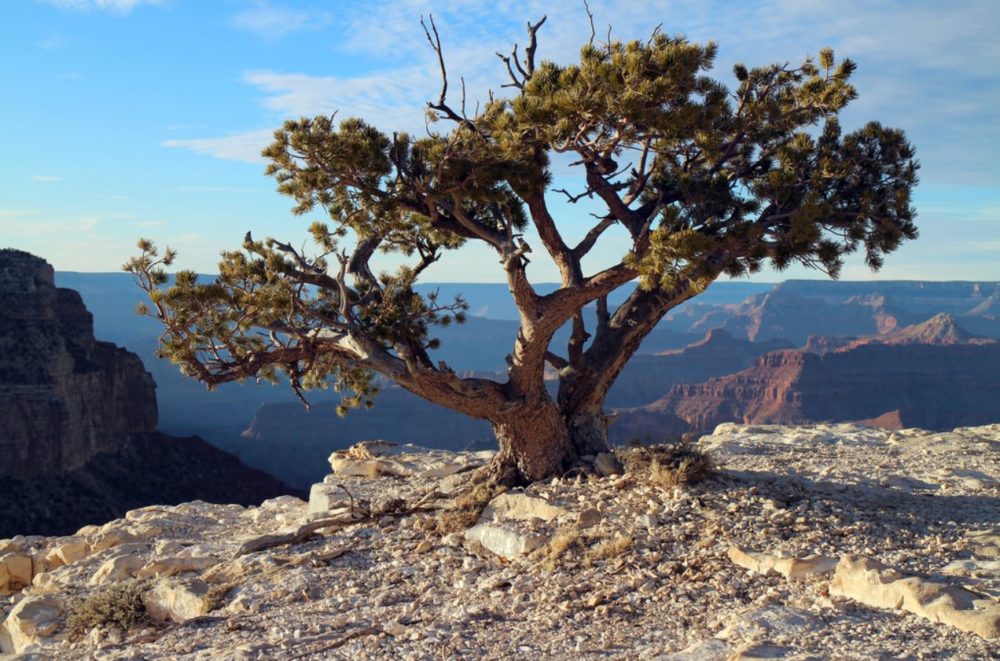
Yaki Point
Additional Grand Canyon Articles:
- Grand Canyon: Hermit’s Rest to Bright Angel
- Grand Canyon: Village to Visitor Center
- Grand Canyon: Village Historic District
- Navigating Grand Canyon National Park
